Chinese vehicles are improving all the time and the latest to hit our shores is a first for Australia’s off-roading community. It’s a petrol-hybrid 4WD with seven seats, high- and low-range gearing and a rear diff lock.
It’s also a body-on-frame ladder chassis design with a packed standard features list and real off-road adventure potential – on paper, at least.
All of that and more for under $70 grand. But is it any good off-road?
Read on.
GWM Tank 500 2024: Lux Hybrid
| Engine Type | Inline 4, 2.0L |
|---|---|
| Fuel Type | Premium Unleaded Petrol |
| Fuel Efficiency | 8.5L/100km (combined) |
| Seating | 7 |
| Price From | $54,340 - $62,480 |
| Safety Rating |
|
Price and features – Does it represent good value for the price? What features does it come with? 7/10
7 / 10
There are two Tank 500 petrol-hybrid variants available at the moment: the Lux – our test vehicle – and it has drive-away pricing of $66,490, and the Ultra which has drive-away pricing of $73,990.
Standard features in the Lux include a 14.6-inch touchscreen multimedia system (with wired and wireless Apple CarPlay and Android Auto), three-zone climate control, a 360-degree view monitor and 'clear chassis view', 'Auto Parking Assist', 'Auto Reversing Assistance', lane departure warning, lane keep assist, all-terrain driving modes and an electronic rear diff lock.
'Marble White' paint is standard. Metallic paint, including 'Crystal Black', 'Dune Gold' and 'Onyx Silver', costs an extra $595.
Design – Is there anything interesting about its design? 7/10
7 / 10
In terms of dimensions, it’s 5078mm long (with a 2850mm wheelbase), 1934mm wide and 1905mm high.
The Tank 500 has a kind of throwback retro style. Not quite as much as its smaller stablemate, the Tank 300, but obvious nonetheless.
There are plenty of old-school 4WD design cues. It’s more than a bit blocky and straight up and down in places, yet it still manages a somewhat contemporary look. Although, there’s a lot of chrome everywhere if that's your cup of tea.
.jpg)
It's clear to see where the GWM Tank 500 takes its cues from – most of the current crop of popular 4WD wagons, such as the Toyota LandCruiser 300 Series.
The Tank 500 is a large vehicle and it straddles that line between large and extra-large 4WD wagons. It is longer than any 300 Series, but it’s narrower and shorter.
It has a sunroof, roof rails and big side steps, befitting a 4WD wagon, and 18-inch alloy wheels.
The interior is well laid-out and functional. Depending on the variant, the interior will either have synthetic leather seating (Lux), or genuine Nappa leather seating (Ultra) and beyond ample soft-touch surfaces there's much to like about the GWM Tank 500's practical and comfortable interior.
.jpg)
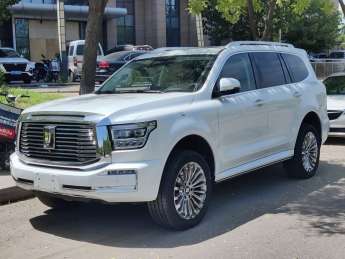
Practicality – How practical is its space and tech inside? 7/10
7 / 10
The GWM Tank 500 Lux has seven seats. Bucket-style seats up front for the driver and front passenger (fine in terms of support and comfort), a three-seat second row in a 60/40 split configuration and a third row in a 50/50 split.
The seats in the Lux are synthetic leather, the Ultra gets Nappa leather and the Lux driver gets an eight-way power-adjustable seat plus four-way adjustable lumbar support; the front passenger gets four-way electric adjustment.
Trading up to the Ultra gets driver and front passenger seats that offer a variety of massage modes. Hmmmm, massage…
.jpg)
In the grand tradition of 4WD wagon second-row seats everywhere, they are fine but not fantastic – reasonably comfortable and supportive. The second and third rows fold flat to expand the rear storage capacity.
Cargo space is a listed 98 litres when all seats are in use, 795 litres when the third row is stowed away, and 1459L when the second and third rows are lowered.
In the rear cargo area there are tie-down points and a cargo slide cover to conceal whatever you have in the back from prying eyes.
Up front, the 14.6-inch touchscreen multimedia system, with Apple CarPlay and Android Auto connectivity, dominates the dash and is easy enough to use, although the cabin set-up is a bit confusing and counter-intuitive in its operation.
Case in point: while the aircon’s fan-speed can be controlled using physical buttons or on-screen buttons, the temperature controls can only be adjusted via the screen which poses a problem if the screen itself freezes on the start-up graphics and you’re unable to adjust the temp via the screen – as it did on this test.
There's also wireless charging, front and rear USB ports, as well as 12V and 220V power outlets.
The audio system has eight speakers in the Lux and 12 in the Ultra’s Infinity system.
The Lux has ‘follow me home’ lights but it doesn’t get the Ultra's 64-colour ambient lighting system.
Under the bonnet – What are the key stats for its engine and transmission? 7/10
7 / 10
Every Tank 500 Hybrid has a 2.0-litre turbo-petrol engine, a 1.76kWh battery and an electric motor. That combination produces 255kW and 648Nm.
The Tank 500 has a nine-speed automatic transmission, low- and high-range 4WD gearing, as well as a rear diff lock.
.jpg)
Driving – What's it like to drive? 7/10
7 / 10
The Tank 500 has a fancy-schmancy start-up screen replete with Tron-style graphics and an accompanying soundtrack that are rather impressive, if you’re into that sort of thing. But I’ll let you know a few paragraphs deeper into this yarn why I think GWM should do away with that whole sequence.
This wagon has a kerb weight of 2605kg and a turning circle of 11.2m, so it’s not insubstantial, but it rarely feels too clumsy or cumbersome to drive anywhere.
It’s reasonably nice on-road during general driving duties but there are a few things to watch out for.
Ride and handling is a bit firm and jittery on irregular surfaces such as rough country roads, but it's okay otherwise. It's reasonably quiet, somewhat refined and it's comfortable without being too plush.
The engine, electric motor and auto transmission generally work together pretty smoothly, but there were times on this test, mostly on road, where there was a jarring change when the electric motor switches to the petrol engine. Not atrocious, but certainly noticeable.
.jpg)
Acceleration is sometimes unpredictable with a sequence of events thus: I put my right foot down to get enough speed for a quick merge from standstill into oncoming traffic, no reaction from vehicle at all… then, with a flaring throttle, it will suddenly lurched into motion. Inconvenient at best, dangerous at worst.
The brakes are also very spongy and often slow to bite until really stomped.
The Tank 500’s driver-assist tech is too clunky and intrusive. I drive a lot of country roads and because those surfaces sometimes don’t have road markings at the side or a centreline, the Tank 500 was constantly sounding alerts or jerking the steering wheel to get me back into what it thought was the correct driving line on those country roads.
The adaptive cruise control is inconsistent. You’ll cruise along nicely until the system applies immediate heavy braking due to a speed sign that’s not applicable, or a car that’s not that close (to the side or in front).
Also, the driver monitor is annoying. It was forever telling me to have a break, or to keep my eyes on the road, or to focus on the road, or – and this is a direct quote from the system itself – “Beware of the road”.
.jpg)
I reckon GWM should ditch the Tank 500’s fancy start-up screen graphics and soundtrack and spend that money on sorting out the driver-assist tech so it operates more seamlessly and effectively.
However, the good news is the Tank 500 feels right at home when four-wheel driving.
On paper, it seems like it should be capable off-road. It has a Borg Warner dual-range transfer case, off-road driving modes and a rear lock.
It checks out in terms of off-road measurements with approach, departure and rampover angles of 30, 24 and 22.5 degrees, respectively, 224mm ground clearance and a wading depth of 800mm.
And it mostly is rather capable, but there are a few issues here and there.
.jpg)
The Tank 500 is built on a traditional platform, a body on ladder-frame chassis, and that's pretty much 4WD wagon personified right there.
It has all the mechanicals to go with that, as well as the added bonus of an electric motor which punches a bit more power and torque into this vehicle.
There is plenty of torque across a decent spread of revs and, when off-roading, that transition between the electric motor and the petrol engine is generally pretty smooth.
Driving modes and other off-road driver-assist tech on board the Tank 500 work pretty well, but the off-road traction control system could do with a bit of a recalibration as it’s not quite as precise as it is in some of the Tank 500’s natural rivals.
Low-range gearing is good, engine braking is solid and the drive modes – adjusting engine outputs, transmission settings and more – all seem to work seamlessly well.
.jpg)
There is plenty of other tech on-board, including a 360-degree camera, and an off-road set-up on the screen that shows you the vehicle’s pitch and roll, tyre pressures and other information.
In the past I have written off features such as the Tank 500’s transparent chassis function. I'd rather stick my head out the window and have a look, or stop the vehicle, get out and have a good look at the track ahead.
But the transparent chassis function is of some value, although you shouldn’t rely on it or any of the other tech. You still want to have a real-time, real-world view of the track heading to the sides. And the Tank 500 offers plenty of visibility.
There are a few other trade-offs in this 4WD’s make-up, though. The side steps look like they could easily be susceptible to damage while off-roading, although I managed to avoid grinding them on any rocks, and the standard tyres are on-road SUV tyres (made for reduced noise) and are less than satisfactory for 4WDing.
If you're planning to use the Tank 500 as your tow vehicle of choice, then it's handy to know that unbraked towing capacity is 750kg and braked towing capacity is 3000kg, which is under the 3500kg norm for this market segment.
Efficiency – What is its fuel consumption? What is its driving range? 7/10
7 / 10
Official fuel consumption is 8.5L/100km on a combined cycle on regular unleaded fuel. On this test I recorded 12.8L/100km.
The Tank 500 has a 80-litre fuel tank, so, going by those fuel figures, you could reasonably expect a driving range of about 625km from a full tank.
Note: Drop 30-50km off any driving-range figure for a better idea of your vehicle’s safe touring range.
Also, remember that numerous other factors affect your fuel consumption and so impact your touring range, including how much extra weight you have onboard (passengers, camping gear, etc), whether your vehicle is fitted with any aftermarket equipment (bullbar, spare-wheel carrier, etc), whether you are towing (a camper-trailer, caravan, or boat, etc), your vehicle's tyre pressures and the conditions.
.jpg)
Warranty & Safety Rating
Safety – What safety equipment is fitted? What is its safety rating? 7/10
7 / 10
The Tank 500 has been awarded the maximum five-star ANCAP safety rating as this story is being finalised.
As standard, it has seven airbags and a comprehensive suite of driver-assist tech including AEB, lane departure warning, adaptive cruise control, tyre pressure monitoring, front and rear parking sensors and a 360-degree around-view function.
.jpg)
Ownership – What warranty is offered? What are its service intervals? What are its running costs? 7/10
7 / 10
The Tank 500 is covered by a seven-year/unlimited km warranty, and seven years capped price servicing.
The Tank 500’s 1.76kWh battery has an eight year/unlimited km warranty.
Service intervals are scheduled for every 12 months/15,000km. Prices were not available at time of writing.
Verdict
The Tank 500 is an impressive seven-seat 4WD wagon. It’s reasonably nice to drive, comfortable and it’s a capable 4WD.
There are glaring issues with some of its driver-assist tech and its hybrid set-up doesn’t offer the fuel economy you’d hope for. But it is packed with features and represents decent value-for-money when cross-shopped against the likes of Prado and Everest.
Pricing Guides

Range and Specs
| Vehicle | Specs | Price* |
|---|---|---|
| Lux Hybrid | 2.0L, Premium Unleaded Petrol, 9 SPEED AUTOMATIC | $54,340 - $62,480 |
| Ultra Hybrid | 2.0L, Premium Unleaded Petrol, 9 SPEED AUTOMATIC | $62,700 - $72,050 |







.jpg)
.jpg)
.jpg)
.jpg)
.jpg)
.jpg)
.jpg)
.jpg)
.jpg)
.jpg)
_0.jpg)
.jpg)
_0.jpg)
.jpg)
.jpg)











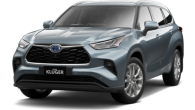


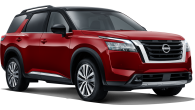








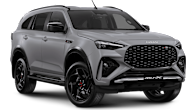



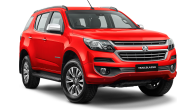


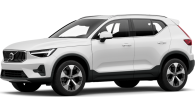



.png)

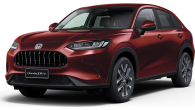

.jpg)




